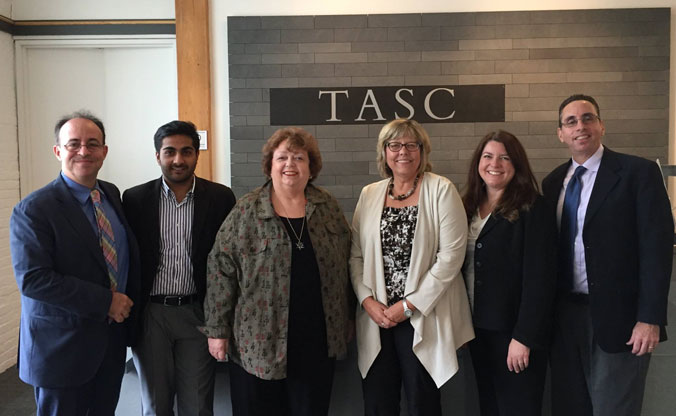(Chicago) – In the United States, the majority of people who come into the criminal justice system
have a substance use problem, which is a treatable health condition. As a response to non-violent offenses related to drug use and addiction, there are many alternatives to incarceration that are more effective and less expensive than keeping people behind bars.
“Program models are not enough,” said TASC President Pam Rodriguez. “What’s much harder to sustain—but what’s necessary if we want to achieve real impact—are whole systems where justice partners and health services in the community work together by design.
“Too often,” she added, “the justice system is the first place where people have a chance to get drug treatment and other health services. Adequate health services must be available in the community far before people reach the point of incarceration.”
For cash-strained governments, overburdened justice systems, and communities and families suffering the consequences of addiction, alternative sanctions for non-violent, drug-related offenses make sense.
First, incarceration is costly. In Illinois, it costs an average of $38,000 to keep someone in prison for a year. A single day in the Cook County Jail costs an average of $143, and even more in the segment of the jail that detains people with serious mental illness.
To borrow a term from the medical field, incarceration is iatrogenic, meaning that in and of itself it is harmful. Incarceration usually leaves people worse off—in terms of recidivism risk, job and family disruption, financial destabilization, and more—than when they went in. Even three days in jail has deleterious consequences.
Furthermore, without intervene early on, there are costs and consequences of a criminal conviction that last far beyond the period of incarceration or probation. The American Bar Association keeps a record of these consequences in each state.
Like other chronic health conditions, substance use disorders are treatable. It is estimated that 23 million people in the United States once had an alcohol or drug problem and no longer do.
Among individuals with a drug problem who were sent to TASC’s court and probation services, there was a 71 percent reduction in arrests for drug and property crimes over a two-year period after program enrollment.
“We know that addiction is treatable,” said Rodriguez. “We know that incarceration is expensive and iatrogenic. We also know that there are effective alternatives to incarceration. For these reasons and more, it makes sense to divert eligible individuals with substance use problems out of the justice system and into treatment and recovery support services in the community.”
There are numerous evidence-based practices and policies for preventing and stopping cycles of drug use and crime. The National Institute on Drug Abuse, the Institute of Behavioral Research at Texas Christian University, and TASC’s Center for Health and Justice are among many entities that publish and promote what works.
“What we know from extensive research and experience is that interventions must be matched to individuals’ risks for reoffending and their clinical needs,” said Rodriguez. “Mismatched interventions—such as the wrong level of care or supervision—not only waste resources, but actually can have the opposite of the intended effect.”

Sept. 14-16, 2016: TASC and partners welcomed guests from international agencies for a three-day site visit focused on diversion initiatives, jail interventions, and sentencing alternatives in Cook and Lake counties. Left to right: Antonio Lomba, Organization of American States; Chritharth Palli, India judiciary; Melody M. Heaps, MMH & Associates; Pam Rodriguez, TASC; Charlotte Sisson, U.S. State Dept.; Richard Baum, White House Office of National Drug Control Policy.